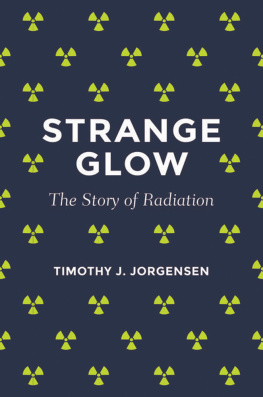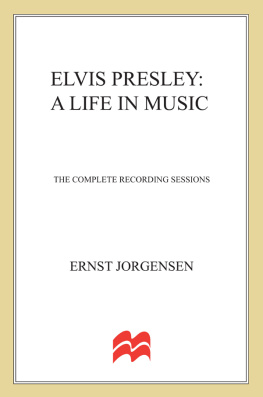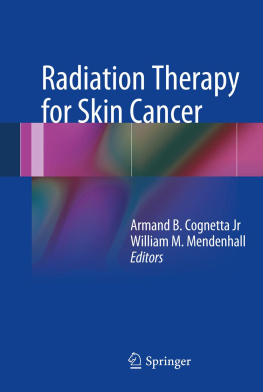Jorgensen - Strange glow: the story of radiation
Here you can read online Jorgensen - Strange glow: the story of radiation full text of the book (entire story) in english for free. Download pdf and epub, get meaning, cover and reviews about this ebook. City: Princeton;Oxford, year: 2017;2016, publisher: Princeton University Press, genre: Religion. Description of the work, (preface) as well as reviews are available. Best literature library LitArk.com created for fans of good reading and offers a wide selection of genres:
Romance novel
Science fiction
Adventure
Detective
Science
History
Home and family
Prose
Art
Politics
Computer
Non-fiction
Religion
Business
Children
Humor
Choose a favorite category and find really read worthwhile books. Enjoy immersion in the world of imagination, feel the emotions of the characters or learn something new for yourself, make an fascinating discovery.
Strange glow: the story of radiation: summary, description and annotation
We offer to read an annotation, description, summary or preface (depends on what the author of the book "Strange glow: the story of radiation" wrote himself). If you haven't found the necessary information about the book — write in the comments, we will try to find it.
Strange glow: the story of radiation — read online for free the complete book (whole text) full work
Below is the text of the book, divided by pages. System saving the place of the last page read, allows you to conveniently read the book "Strange glow: the story of radiation" online for free, without having to search again every time where you left off. Put a bookmark, and you can go to the page where you finished reading at any time.
Font size:
Interval:
Bookmark:

STRANGE GLOW
STRANGE GLOW
The Story of Radiation
TIMOTHY J. JORGENSEN
PRINCETON UNIVERSITY PRESS
Princeton and Oxford
Copyright 2016 by Timothy J. Jorgensen
Requests for permission to reproduce material from this work should be sent to Permissions, Princeton University Press
Published by Princeton University Press, 41 William Street, Princeton, New Jersey 08540
In the United Kingdom: Princeton University Press, 6 Oxford Street, Woodstock, Oxfordshire OX20 1TR
press.princeton.edu
Cover art by Jessica Massabrook
All Rights Reserved
Third printing, and first paperback printing, 2017
Paper ISBN 978-0-691-17834-9
Cloth ISBN 978-0-691-16503-5
Library of Congress Control Number 2015959168
British Library Cataloging-in-Publication Data is available
This book has been composed in Montserrat & Sabon LT Std.
Printed on acid-free paper
Printed in the United States of America
3 5 7 9 10 8 6 4
DEDICATED TO MY PARENTS,
Charles and Marion Jorgensen

A tribute of my respect,
admiration, and love
CONTENTS
PART ONE: |
PART TWO: |
PART THREE: |
PREFACE
Classica book which people praise and dont read.
Mark Twain
Things that are complex are not useful. Things that are useful are simple.
Michail Kalashnikov, inventor of the simple and reliable Automatic Kalashnikov-1947 (AK-47) assault rifle, which has only eight moving parts.
This book was not meant to be a classic; it was meant to be useful. I have, therefore, written it using straightforward language largely devoid of scientific jargon. In so doing, it is my wish that the book will be accessible to the widest possible audience of readers, regardless of whether they have any technical background. If I have done my job well, readers of this book will learn a tremendous amount about radiation and will find this information useful in many practical ways.
People like to get their learning in the form of stories.encounters with radiation, and of how mankind has been transformed by the experience. The story is, therefore, told with an emphasis on the human aspects, and it is told from a health-centric perspective. The goal is to integrate the technological aspects of radiation with the human experience and thereby remove some of the mystery and misunderstanding that surround radiation. Nevertheless, this is not a book about lessening your fear of radiation. Fear is a very subjective emotion, driven by many factors. The only thing that can be achieved here is to present the facts about radiation as objectively and evenhandedly as possible, leaving you to decide which aspects to fear.
Another purpose of this book is to dispel the myth that the subject of radiation risks is so complicated that it is beyond the capability of ordinary people to grasp, leaving reliance on radiation experts as their only recourse. This is simply not true. Intelligent people, even those lacking any technical background, should be able to understand the fundamental principles that drive radiation risk and then make their own decisions about how large a threat radiation poses to them personally and collectively. This book seeks both to convince people that they can be masters of their own radiation fate, and to empower them to make their own well-informed decisions about their personal radiation exposures.
Lastly, this book is an experiment in risk communication. The open question is whether radiation risks can be characterized accurately and effectively without reliance on a lot of mathematics, tables, and graphs. These highly quantitative approaches have proved to be largely ineffective in communicating the essence of risk to the public. This book is devoid of graphs and tables and keeps the mathematics to a minimum. Instead, it tries to instill a sense of the magnitude of the threat through a historical scientific narrative about the people who encountered radiation of various types and dose levels, and the health consequences of those exposures. In this way, we can get an accurate sense of the level of the radiation hazard even if we dont have a detailed understanding of the underlying technology.
Can all this be achieved? I dont see why not. Its been done beforein the case of electricity. Electricity was a technological innovation introduced to society shortly before radiation. Initially, it was greatly feared as a deadly and invisible threat to health. With time, however, people began to understand that a flashlight battery didnt pose the same danger as a downed power line. Even people who couldnt explain the difference between an amp and a volt began to understand that, although there were risks of death, those risks could be managed so that the benefits of electricity could be maximized and the risks minimized. Now no one speaks of being pro- or anti-electricity. They understand that electricity is here to stay. There is no going back. All we can do is manage electricity to minimize its dangers relative to its benefits.
But we havent yet reached a similar place with radiation. People today often react to radiation in the same way that people reacted to electricity over a hundred years ago. Our understanding of radiation needs to advance to the point that we develop the same good sense about radiation risks that we have for electricity. Radiation, like electricity, is a technology that is here to stay. So the more that people learn about radiation, the better off well all be. This book seeks to increase public understanding of radiation, in much the same way that people gradually came to understand electricity.
You will get the most from this book if you appreciate how it is organized. After a brief opening chapter that sets the stage for the topic (), the book is divided into three parts.
make cameo appearances in the form of anecdotes about problems suffered by the early scientific pioneers of radiation research. A comparison is made to electricity, as an example of an earlier technology that was originally regarded by the public with even greater suspicion.
, where the role of risk/benefit analysis in making decisions regarding radiation use is explored.
any loss of narrative continuity, but the developing story of risk assessment and its relationship to safety will be garbled, so a nonsequential approach is not recommended.
The epilogue contains some final thoughts regarding all that weve learned about radiation and how best to apply that information to everyday life. It also includes one final story about radiation that has a very important take-home message.
With this overview, you are now ready to begin your exploration of the world of radiation. You will likely find it both interesting and enjoyable, but also a little scary. Nevertheless, in the end, youll be much better equipped to deal with any radiation issues that you encounter during your travels through life in a modern technological society, where radiation presents itself at every turn. Good luck on your journey.
TIMOTHY J. JORGENSEN
WASHINGTON, DC
STRANGE GLOW
CHAPTER 1
NUCLEAR JAGUARS
In the dark, all cats are jaguars.
Anonymous Proverb
As a rule, men worry more about what they cant see than about what they can.
Next pageFont size:
Interval:
Bookmark:
Similar books «Strange glow: the story of radiation»
Look at similar books to Strange glow: the story of radiation. We have selected literature similar in name and meaning in the hope of providing readers with more options to find new, interesting, not yet read works.
Discussion, reviews of the book Strange glow: the story of radiation and just readers' own opinions. Leave your comments, write what you think about the work, its meaning or the main characters. Specify what exactly you liked and what you didn't like, and why you think so.








